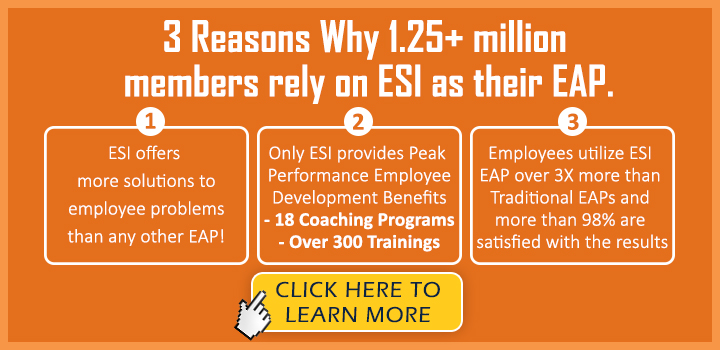For most HR managers, end-of-year/new year is busy time of year and the to-do checklist is generally pretty long. One task that should be high on any year-end to-do lists is ensuring that you are ready for the new overtime exemption rules scheduled to go into effect on January 1. But in addition to the federal changes, check your state law, which may vary. Several states are instituting higher thresholds.
As most HR managers know, this change has been pending since the Obama era proposed a higher threshold, which was subsequently stopped when challenged in court. Everyone knew that some change was pending, just not what the details or the threshold would be. This post will explain details of the new rule and will discuss some of the state laws, many of which have laws mandating higher thresholds.
The U.S. Department of Labor (DOL) rolled out its final rule in late September, the first change to the exemption rule contained in the Fair Labor Standards Act (FLSA) in more than 15 years. The change is estimated to affect more than 1.3 million employees who are currently exempt from overtime but will now be eligible for time and a half pay.
Today, the current threshold for exemption is $23,660 a year. Obama had proposed a threshold of $46,000, but this was challenged and overturned in court. Under the new rule as of January 2020, employees must earn at least $35,568 a year ($684 a week or just over $17 per hour) to be exempt from overtime pay for any hours worked over 40 in a work week.
Going forward, for an employee to be exempt from the overtime pay requirement, employees must earn more than the overtime salary threshold and perform work that is classified as executive, administrative, or professional in nature. The most common exemptions for the new rule are for doctors, attorneys, teachers and outside sales employees.
According to HR Daily News (Long-Awaited Rule on Overtime Exemption Slated to Take Effect January 1):
The new rule, which is slated to go into effect on January 1, 2020, makes no changes to the duties test but makes the following changes affecting salary:
-
It raises the “standard salary level” from $455 to $684 per week (from $23,660 to $35,568 a year). Anyone making less than that level cannot be classified as exempt and therefore must be paid overtime for any hours over 40 worked in a workweek.
-
It raises the total annual compensation level required for individuals in the “highly compensated employee” exemption (subject to a minimum duties test) from $100,000 to $107,432.
-
It allows employers to use nondiscretionary bonuses and incentive payments (including commissions) that are paid at least annually to satisfy up to 10 percent of the standard salary level.
-
It revises the special salary levels for workers in U.S. territories and in the motion picture industry.
In addition, last week the DOL issued a Notice of Proposed Rulemaking: Fluctuating Workweek Method of Computing Overtime, Note that this is proposed an not final – it would “allow job creators to offer bonuses or other incentive-based pay to employees whose hours vary from week to week.”
Some state overtime thresholds differ: the higher threshold prevails
According to the DOL, ” In cases where an employee is subject to both the state and federal overtime laws, the employee is entitled to overtime according to the higher standard (i.e., the standard that will provide the higher overtime pay).”
There are many industries that are keeping a close eye on the overtime laws in the states, the restaurant industry among them. A recent article in Restuarant Business tracks some of these state overtime initiatives: States scramble to expand overtime eligibility
Many states have contended that the new federal threshold is still too low. California has already enacted legislation that will mandate overtime pay as of 2022 for any salaried employee earning less than $62,400 per year. New York intends to gradually raise its exemption threshold to $58,500 in some parts of the state, and Pennsylvania announced plans last week to increase its exemption trigger to $45,500 by 2022.
Regulators and lawmakers in the state of Washington have called for entitling anyone making less than $79,872 to overtime pay, and Massachusetts and Maine are considering new triggers of $64,000 and $55,000, respectively. Colorado is also evaluating a change in its laws.
New Jersey became the latest addition to the list after an influential local think tank, New Jersey Policy Perspective, issued a report yesterday that argued for increasing the state’s exemption threshold to $78,000 within the next five years. By that time, New Jersey’s minimum wage will have climbed to $15 an hour.
In an August blog post on overtime here on HR Web Cafe, we pointed to Bill Murphy Jr.’s article at Inc.: Millions of Employees Will Soon Be Newly Eligible for Overtime Pay. Here’s How to Know If You (or Your Business) Is Affected. He points to these state plans and proposals:
Among the current plans and proposals that could significantly change things:
- Massachusetts is considering boosting its overtime threshold from $23,660 to $64,000.
- In Washington State, the government is working on a plan to increase the threshold to $79,872 (a 300 percent increase)
- A Maine proposal would raise the threshold from $33,000 to $55,000.
- Pennsylvania is weighing a plan to increase its state threshold to $47,000.
- California’s threshold is going up to $62,400.
- New York State is raising it to $58,500.
You should monitor this topic at state Labor Department offices for any states in which your organization has employees.
Overtime toolkit
- DOL – US Department of Labor – Overtime Pay
- DOL – Final Rule: Overtime Update
- DOL: Fact Sheet: Final Rule to Update the Regulations Defining and Delimiting the Exemptions for Executive, Administrative, and Professional Employees
- DOL: Highlights of the Final Rule on Overtime Eligibility for White Collar Employees
- DOL: Small Entity Compliance Guide To the Fair Labor Standards Act’s Exemptions (PDF)
- Fisher Philips: What You Should Know About The New(est) “New Overtime Rule”
- Littler: The DOL’s New Overtime Rule and What it Means for U.S. Employers (slideshow)
- HR Daily Advisor: Is It OK to Allow Exempt Employees to Perform Some Nonexempt Duties?
State Resources
- DOL: State Labor Laws
- ExakTime: 2019 overtime laws, state by state
- Employment Law Handbook: State Minimum Wage and Overtime Law Summaries
Proposed rule on fluctuating overtime
- DOL: Notice of Proposed Rulemaking: Fluctuating Workweek Method of Computing Overtime,
- National Law Review: Proposed New Overtime Rule Would Affect Fluctuating Workweek Employees
- Employee Benefit News: DOL’s new fluctuating workweek rule may pave road for worker bonuses
- HR Executive: DOL issues proposed rule on fluctuating workweeks


